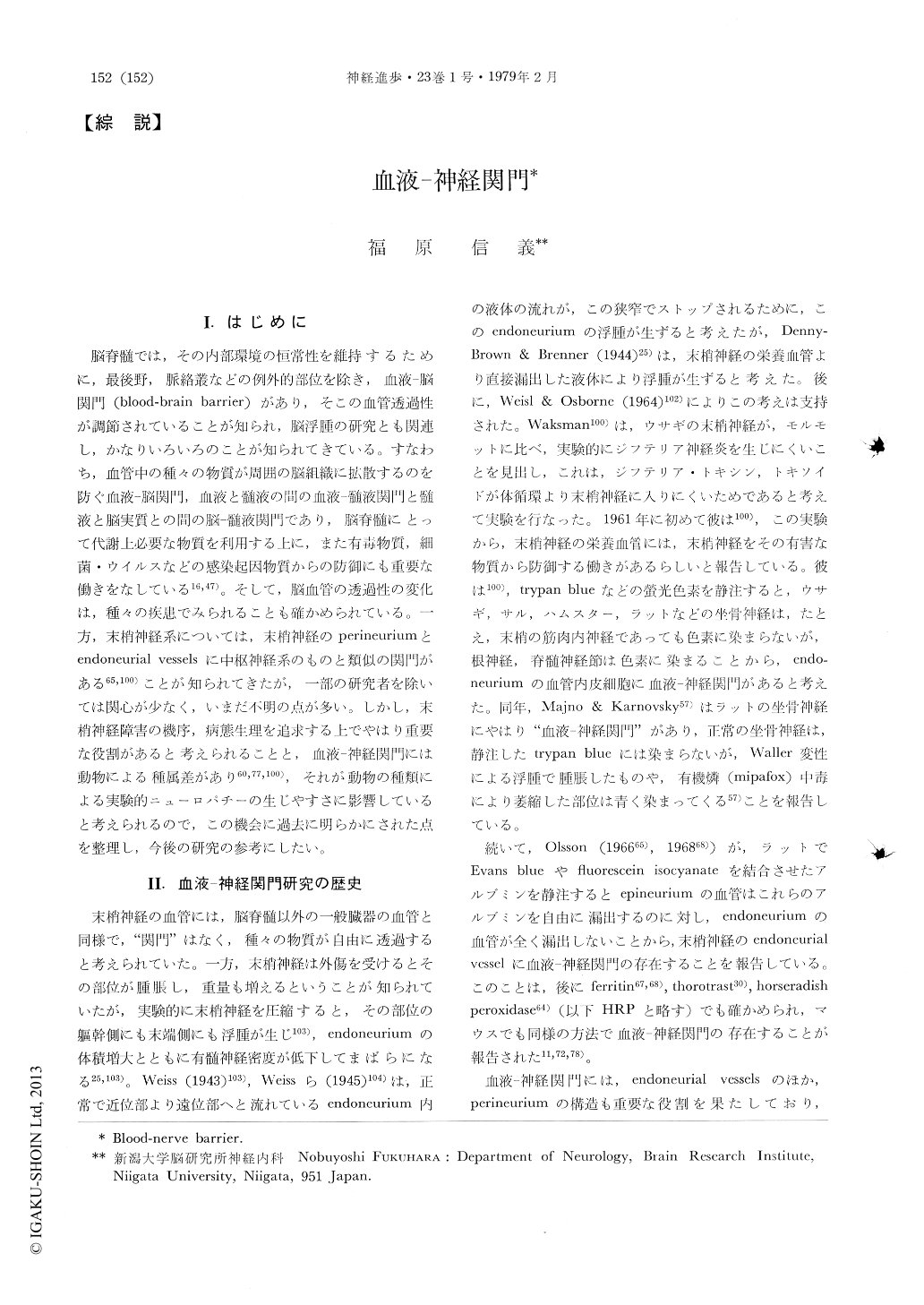Japanese
English
- 有料閲覧
- Abstract 文献概要
- 1ページ目 Look Inside
Ⅰ.はじめに
脳脊髄では,その内部環境の恒常性を維持するために,最後野,脈絡叢などの例外的部位を除き,血液—脳関門(blood-brain barrier)があり,そこの血管透過性が調節されていることが知られ,脳浮腫の研究とも関連し,かなりいろいろのことが知られてきている。すなわち,血管中の種々の物質が周囲の脳組織に拡散するのを防ぐ血液—脳関門,血液と髄液の間の血液—髄液関門と髄液と脳実質との間の脳—髄液関門であり,脳脊髄にとって代謝上必要な物質を利用する上に,また有毒物質,細菌・ウイルスなどの感染起因物質からの防御にも重要な働きをなしている16,17)。そして,脳血管の透過性の変化は,種々の疾患でみられることも確かめられている。一方,末梢神経系については,末梢神経のperineuriumとendoneurial vesselsに中枢神経系のものと類似の関門がある65,100)ことが知られてきたが,一部の研究者を除いては関心が少なく,いまだ不明の点が多い。しかし,末梢神経障害の機序,病態生理を追求する上でやはり重要な役割があると考えられることと,血液—神経関門には動物による種属差があり60,77,100),それが動物の種類による実験的ニューロハチーの生じやすさに影響していると考えられるので,この機会に過去に明らかにされた点を整理し,今後の研究の参考にしたい。
The existence of the blood-nerve barrier was suggested by Manery and Bale (1941) and was established by the experiments of Waksman (1961), who found the sciatic nerve of the rabbit to be impermeable to labelled protein indifferently from that of the guinea pig. Normal rats also showed labelled protein, horseradish peroxidase or thorotrast to be leaked out abundantly from the epineurial vessels, but never outside of the endoneurialvessels. The permeability to labelled protein in the endoneurial vessels of each animal species is different from every other animal species.

Copyright © 1979, Igaku-Shoin Ltd. All rights reserved.


